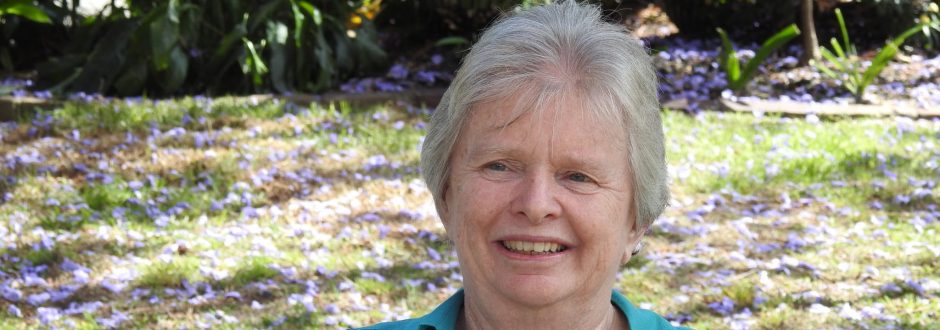Pauline chose not to have invasive treatment, but to live each day to the full and to deal with dying and death in a positive and proactive way as cancer ravaged her body, writes Good Samaritan Sister Clare Condon.
BY Clare Condon SGS
Last week I attended the Mass of Christian Burial for one of our Good Samaritan Sisters. She was aged 76. Today, in our Western society, 76 is not old. Yet women die from breast cancer at a variety of ages. Cancer makes no distinctions.
Pauline had been actively engaged in many pursuits when, just nine months ago, she was diagnosed with an aggressive cancer. She chose not to have invasive treatment, but to live each day to the full and to deal with dying and death in a positive and proactive way as cancer ravaged her body.
Her response was loud and clear. “I’d rather quality of life than length of days”. She was not interested in prematurely ending her days because of what might lie ahead. But rather, she was utterly committed to living each day to her fullest capacity, as best she could, with the ordinary daily resources that medical care could offer.
It is this attitude of hers that stands in stark contrast in a society that often won’t even discuss death and dying. For many people, death is seen as the end of the line and there is no life beyond the grave. Death, the great unknown, is to be feared and even denied. Yet we all know it is the one reality we cannot avoid.
Pauline’s attitude to death and dying is also mirrored in the institutional life of Catholic religious orders of women, particularly here in Australia. We are daily facing diminishment as our older members come to the end of their lives and new membership is scarce. However, contrary to expectation, there is no gloom and doom amongst us. We have a powerful belief in life hereafter, and death does not dominate nor diminish the life or ministries of individuals or of the group.
Pauline’s funeral service was a celebration of a life committed to seeking God, with all the questioning and challenges such a search involves. It was an acknowledgement of her ministry to education and social justice, and in recent years, to her work for vulnerable women who have been trafficked and abused. She was a committed member of ACRATH (Australian Catholic Religious Against Trafficking in Humans).
For my own religious order, the Rule of Benedict, as our inspiration and guide, reminds us of Benedict’s words: “Keep your eye on death every day” (Rule of Benedict 4:47) – a sobering thought, indeed! What was Benedict actually asking of his monks 1,500 years ago? Does it have any relevance for us today and how we live our lives? I think it does.
Commenting on this dictum of Benedict, Cistercian priest Michael Casey OCSO, in his book Seventy-Four Tools For Good Living, says: “These unwelcome thoughts need not necessarily depress or paralyse us. They can be a source of energy bidding us to make the most of the opportunities we have while we still have them”.
We are all on the road of life, which ultimately leads to death. Whether we are aware of how and when that will happen is neither clear nor known. Death is mystery, whichever way we look at it. So I believe it is good to acknowledge this reality of ultimate death and to be willing to discuss our hopes and realities. Nothing is gained by ignoring this reality.
Pauline’s approach of open and faith-filled communication assisted her and others in facing her imminent death. Parting from family and friends was still challenging and difficult, but by sharing with those who were loved and who loved in return, there was no denial but a deep and abiding support and presence.
We are coming up to the month of November. The Christian Church has a long-standing tradition of dedicating November to honouring and praying for the dead. The Church believes in the communion of saints. Such a belief invites us to think beyond the confines of this earth, to the big-heartedness of God, to the mercy of God, to the possibility that this life is only the beginning, not the end.
November commences with two feast days, All Saints Day and All Souls Day. I’m inclined to celebrate All Saints Day for all the dead I have known, because of this incredible mercy of God.
The idea of praying for the dead has a long history in both Jewish and early Christian traditions. It was then developed over the centuries, particularly by Benedictine monasteries. It was Saint Odilo of Cluny who, in the eleventh century, chose November 2 for all the monasteries dependent on the Abbey of Cluny to pray for the deceased. The November 2 custom spread to other Benedictine monasteries and thence to the whole Church.
November is a time “to keep an eye on death daily” and to give thanks for all those who have gone before us and have influenced the world by their simple goodness. It is a time for contemplating death, my own and others’, and the possibility of being united in the communion of saints beyond this life on earth.
